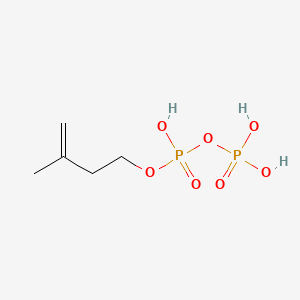| Srivastava NK and Srivastava AK |
Influence of Some Heavy Metals on Growth, Alkaloid Content and Composition in Catharanthus roseus L. |
2010 |
Indian J Pharm Sci |
pmid:21969751
|
| Domagalska MA et al. |
Genetic analyses of interactions among gibberellin, abscisic acid, and brassinosteroids in the control of flowering time in Arabidopsis thaliana. |
2010 |
PLoS ONE |
pmid:21103336
|
| Voskens CJ et al. |
Ex-vivo expanded human NK cells express activating receptors that mediate cytotoxicity of allogeneic and autologous cancer cell lines by direct recognition and antibody directed cellular cytotoxicity. |
2010 |
J. Exp. Clin. Cancer Res. |
pmid:20937115
|
| Mookerjee-Basu J et al. |
F1-adenosine triphosphatase displays properties characteristic of an antigen presentation molecule for Vgamma9Vdelta2 T cells. |
2010 |
J. Immunol. |
pmid:20483757
|
| Kumari U and Heese K |
Cardiovascular dementia - a different perspective. |
2010 |
Open Biochem J |
pmid:20448820
|
| Dalle Carbonare L et al. |
Safety and tolerability of zoledronic acid and other bisphosphonates in osteoporosis management. |
2010 |
Drug Healthc Patient Saf |
pmid:21701624
|
| Mialoundama AS et al. |
Characterization of plant carotenoid cyclases as members of the flavoprotein family functioning with no net redox change. |
2010 |
Plant Physiol. |
pmid:20460582
|
| Lee LV et al. |
Biophysical investigation of the mode of inhibition of tetramic acids, the allosteric inhibitors of undecaprenyl pyrophosphate synthase. |
2010 |
Biochemistry |
pmid:20476728
|
| De Schutter JW et al. |
Novel bisphosphonate inhibitors of the human farnesyl pyrophosphate synthase. |
2010 |
Bioorg. Med. Chem. Lett. |
pmid:20801032
|
| Lu YP et al. |
Mechanism of cis-prenyltransferase reaction probed by substrate analogues. |
2010 |
Biochem. Biophys. Res. Commun. |
pmid:20828539
|
| Kiran U et al. |
Structural and functional characterization of HMG-COA reductase from Artemisia annua. |
2010 |
Bioinformation |
pmid:21364776
|
| Dunne MR et al. |
Preferential Th1 cytokine profile of phosphoantigen-stimulated human Vγ9Vδ2 T cells. |
2010 |
Mediators Inflamm. |
pmid:21403900
|
| Singh RS et al. |
Expression of 3-hydroxy-3-methylglutaryl-CoA reductase, p-hydroxybenzoate-m-geranyltransferase and genes of phenylpropanoid pathway exhibits positive correlation with shikonins content in arnebia [Arnebia euchroma (Royle) Johnston]. |
2010 |
BMC Mol. Biol. |
pmid:21092138
|
| Diamond DL et al. |
Temporal proteome and lipidome profiles reveal hepatitis C virus-associated reprogramming of hepatocellular metabolism and bioenergetics. |
2010 |
PLoS Pathog. |
pmid:20062526
|
| Emanuelli F et al. |
A candidate gene association study on muscat flavor in grapevine (Vitis vinifera L.). |
2010 |
BMC Plant Biol. |
pmid:21062440
|
| Kabelitz D |
Human γδ T lymphocytes for immunotherapeutic strategies against cancer. |
2010 |
F1000 Med Rep |
pmid:20948839
|
| Schilmiller AL et al. |
Studies of a biochemical factory: tomato trichome deep expressed sequence tag sequencing and proteomics. |
2010 |
Plant Physiol. |
pmid:20431087
|
| Baikar S and Malpathak N |
Secondary metabolites as DNA topoisomerase inhibitors: A new era towards designing of anticancer drugs. |
2010 |
Pharmacogn Rev |
pmid:22228937
|
| Plaimas K et al. |
Identifying essential genes in bacterial metabolic networks with machine learning methods. |
2010 |
BMC Syst Biol |
pmid:20438628
|
| Kudoh T et al. |
Mevalonate analogues as substrates of enzymes in the isoprenoid biosynthetic pathway of Streptococcus pneumoniae. |
2010 |
Bioorg. Med. Chem. |
pmid:20056424
|
